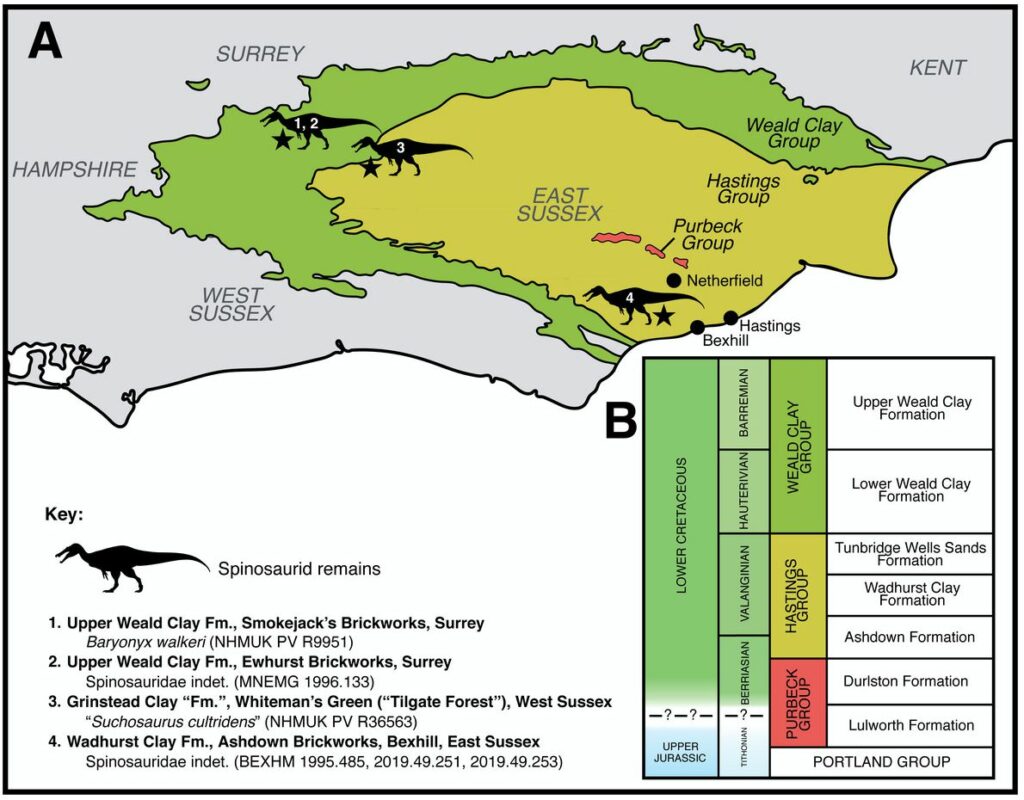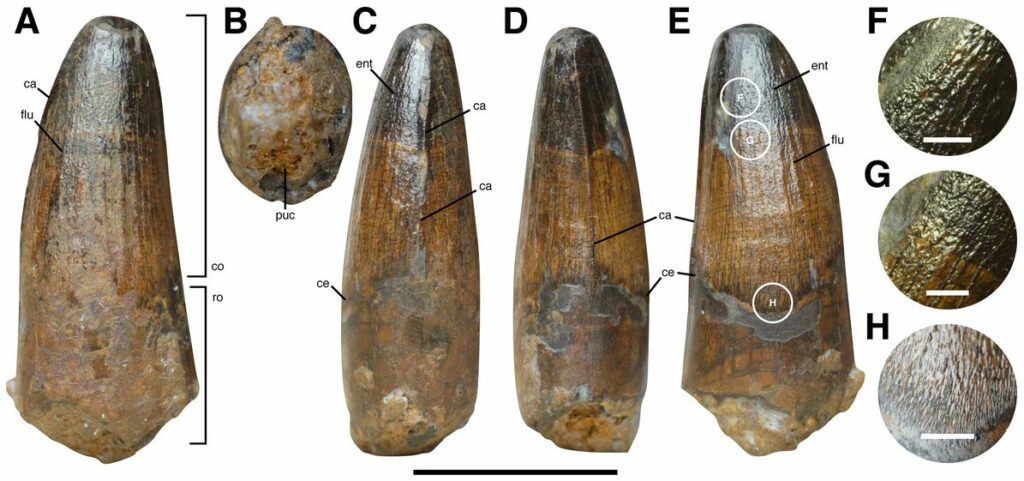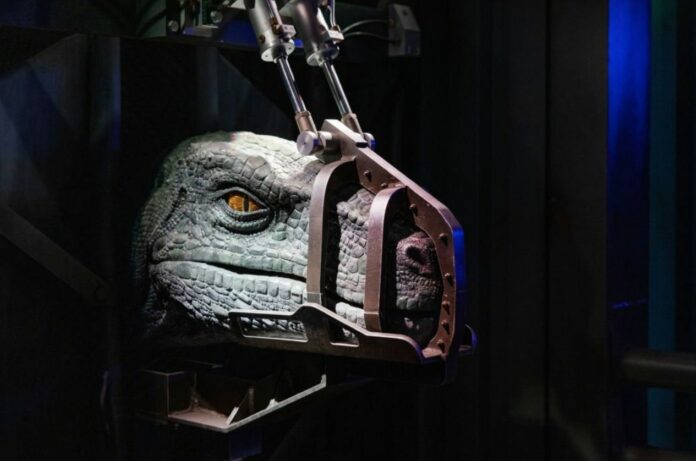Teeming with dinosaurs: how Cretaceous Britain was real Jurassic Park
New research conducted by palaeontologists at the EvoPalaeoLab of the University of Southampton has revealed that Cretaceous Britain was inhabited by multiple distinct spinosaur groups. The study, based on the analysis of a British spinosaur tooth, challenges previous assumptions about the dinosaur diversity in the region.
The fossil, which serves as the foundation of this new study, has been stored within the collections of the Hastings Museum and Art Gallery in East Sussex since it was gifted to the museum in 1889. It was originally discovered in the Lower Cretaceous rocks of the Wealden Supergroup, a complex rock sequence that stretches across southeastern England and dates back 140 to 125 million years.
The Wealden Supergroup is renowned for its abundance of spinosaur fossils. One of the most significant spinosaur specimens in the world, Baryonyx, was first discovered in the Wealden of Surrey in 1983 and provided crucial insights into the appearance and diet of this unique crocodile-headed, fish-eating dinosaur group. However, the region is also known for yielding less remarkable spinosaur remains, particularly isolated teeth, which have often been misidentified as belonging to Baryonyx.
The recent study, published in PeerJ Life & Environment, confirms long-held suspicions among experts that some of these isolated teeth actually represent different spinosaur species. Through various analytical techniques, the researchers demonstrated that the tooth examined in this study does not align with Baryonyx, thus solidifying the existence of multiple spinosaur types in Cretaceous Britain.
“We used a variety of techniques to identify this specimen, in order to test whether isolated spinosaur teeth could be referred to Baryonyx”, explains lead author Chris Barker. “The tooth did not group with Baryonyx in any of our data runs. It must belong to a different type of spinosaur.”
The findings reveal that the Early Cretaceous era in the region was inhabited by distinct and distantly related species of spinosaurs. These results support the previous research conducted by the EvoPalaeoLab team, who proposed that the diversity of spinosaurs in southern England surpasses previous assumptions. In 2021, they identified a new species called “Ceratosuchops,” also known as the ‘hell heron,’ which was found on the Isle of Wight. Furthermore, in 2022, they made an astounding discovery of a potential record-breaking land predator in Europe, an enormous spinosaur referred to as the “White Rock spinosaur.” These various spinosaur species did not coexist but thrived in the region for a span of over 15 million years.

“Museums themselves are places to make exciting discoveries as our understanding of specimens changes from the time they were deposited,” adds Dr. Neil Gostling from the University of Southampton.
“What this work highlights is the importance of keeping collections alive, and developing our understanding of them. Curators are essential to help us navigate the cupboards and displays, helping us to unpick the often-incomplete records- either never fully written, or lost to time.

“The diversity of palaeoenvironments,” according to Dr. Neil Gostling, “is not always hidden in rocks, it is often waiting in a museum, its importance waiting to be rediscovered!”
“Dinosaur teeth preserve numerous anatomical details, and we can use various analytical techniques to see how similar, or different, they are to other teeth,” explains Dr. Darren Naish.
“Our new study shows that previously unrecognised spinosaur species exist in poorly known sections of the Wealden’s history, and we hope that better remains will be discovered that improves our knowledge.
“Here’s another reminder that even well-studied places like southern England have the potential to yield new dinosaur species.”
Source: 10.7717/peerj.15453
Image Credit: Getty
